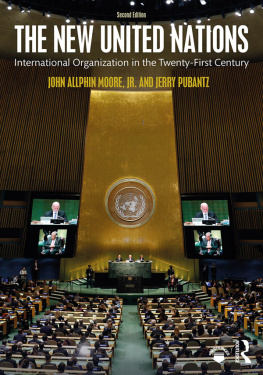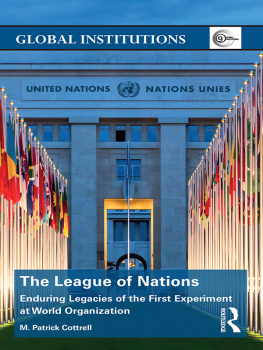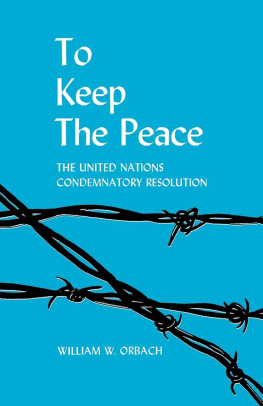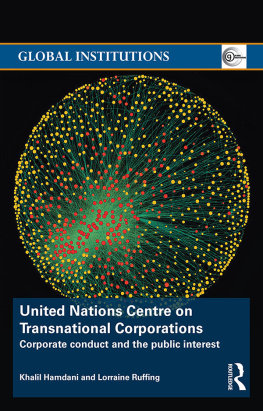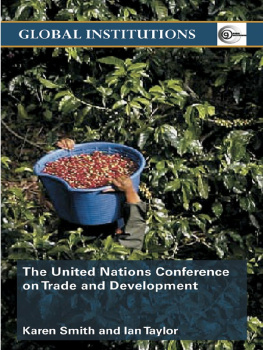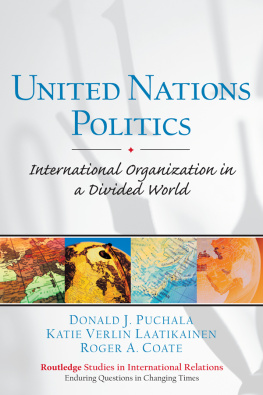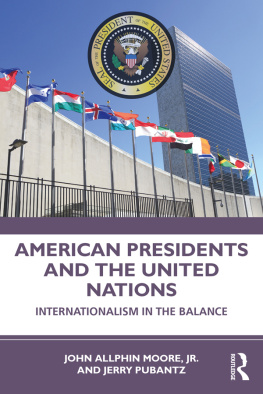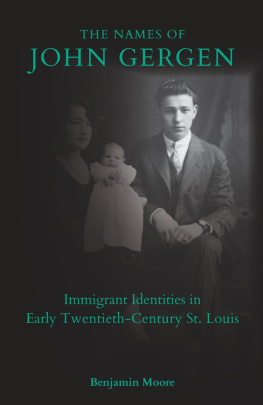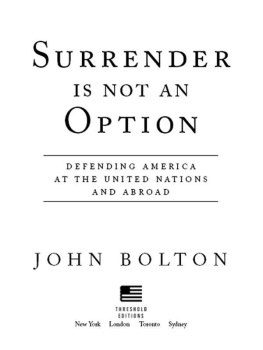The New United Nations
With a fresh look at challenges to the UN in Syria, Iran, Russia, and elsewhere, the second edition of this successful text highlights new international trends toward global governance, holistic democracy and human development, and progress on peacebuilding and counterterrorism. A comprehensive guide to the world bodys institutions, procedures, policies, specialized agencies, historic personalities, initiatives, and involvement in world affairs, The New United Nations is organized thematically, blending both topical and chronological explanations making reference to current scholarly terms and theories.
New to this edition:
- Fully updated chapters and a new Introduction, including discussion of the Paris Climate Change Agreement, Human Rights Council, and Peacebuilding Commission;
- New sections on Special Rapporteurs and Special Procedures, the theory and practice of neoliberalism, the UNs endorsement of the Responsibility to Protect, and Contact Groups;
- Unique special section on the student Model United Nations experience;
- Coverage of the UNs fifteen-year assessment of the Millennium Development Goals and the consequent approval of the Sustainable Development Goals; and
- eResources with supportive materials and documents.
John Allphin Moore, Jr. is Professor Emeritus of History at California State Polytechnic University at Pomona, USA.
Jerry Pubantz is Professor of Political Science at the University of North Carolina at Greensboro, USA.
The New United Nations
International Organization in the Twenty-First Century
Second Edition
John Allphin Moore, Jr.
California State Polytechnic University
Jerry Pubantz
University of North Carolina at Greensboro
Published 2017
by Routledge
711 Third Avenue, New York, NY 10017
and by Routledge
2 Park Square, Milton Park, Abingdon, Oxon, OX14 4RN
Routledge is an imprint of the Taylor & Francis Group, an informa business
2017 Taylor & Francis
The right of John Allphin Moore, Jr. and Jerry Pubantz to be identified as the authors of this work has been asserted by them in accordance with sections 77 and 78 of the Copyright, Designs and Patents Act 1988.
All rights reserved. No part of this book may be reprinted or reproduced or utilised in any form or by any electronic, mechanical, or other means, now known or hereafter invented, including photocopying and recording, or in any information storage or retrieval system, without permission in writing from the publishers.
Trademark notice: Product or corporate names may be trademarks or registered trademarks, and are used only for identification and explanation without intent to infringe.
First Edition published by Pearson Education, Inc. 2006
Library of Congress Cataloging-in-Publication Data
Names: Moore, John Allphin, 1940 author. | Pubantz, Jerry, 1947 author.
Title: The new United Nations : international organization in the twenty-first century / John Allphin Moore, Jr., California State Polytechnic University, Jerry Pubantz, University of North Carolina at Greensboro.
Description: Second edition. | New York : Milton Park, Abingdon, Oxon : Routledge, 2017.
Identifiers: LCCN 2016046466 | ISBN 9781138185791 (hardback) | ISBN 9781138185807 (pbk.) | ISBN 9781315644240 (ebook)
Subjects: LCSH: United Nations. | International relations.
Classification: LCC JZ5005 .M66 2017 | DDC 341.23dc23
LC record available at https://lccn.loc.gov/2016046466
ISBN: 978-1-138-18579-1 (hbk)
ISBN: 978-1-138-18580-7 (pbk)
ISBN: 978-1-315-64424-0 (ebk)
Typeset in Times
by Apex CoVantage, LLC
Visit the e-Resource: www.routledge.com/9781138185807
Dedicated to those who taught
us to understand and write about
the world, especially:
M. Margaret Ball
Charles S. Campbell, Jr.
Jeane J. Kirkpatrick
Myron Roberts
Brief Contents
Resource4Statute of the International Court of Justice
(Online Resource: https://www.routledge.com/9781138185807)
Resource5Un Member States
(Online Resource: https://www.routledge.com/9781138185807)
Resource6Secretaries-General of The United Nations
(Online Resource: https://www.routledge.com/9781138185807)
Resource7Selected un Resolutions
(Online Resource: https://www.routledge.com/9781138185807)
Resource8Second-Generation Peacekeeping, Nation-Building, Political, and Peace-Building Operations in the New Era
(Online Resource: https://www.routledge.com/9781138185807)
Contents
Resource4Statute of the International Court of Justice
(Online Resource: https://www.routledge.com/9781138185807)
Resource5Un Member States
(Online Resource: https://www.routledge.com/9781138185807)
Resource6Secretaries-General of the United Nations
(Online Resource: https://www.routledge.com/9781138185807)
Resource7Selected un Resolutions
(Online Resource: https://www.routledge.com/9781138185807)
Resource8Second-Generation Peacekeeping, Nation-Building, Political, and Peace-Building Operations in the New Era
(Online Resource: https://www.routledge.com/9781138185807)
It has been more than a decade since we published the first edition of The New United Nations. At first blush, it may press our readers credulity that a second edition can still talk about a new UN. For, after all, at the turn of the century, when we wrote what was then our third book on the United Nations, the world body was in the thralls of a reform revolution; it had just become the first universal intergovernmental organization dedicated to peace and security in history, it had set a new course at the Millennium Summit, and the institution was responding rather effectively to the new challenges brought on by the end of the Cold War. Today, we still believe the moniker is valid as, over the last dozen years, the UN System has addressed unremitting international pressures with a flexibility in ideas as well as policies that suggest not only an enduring world body, but one that remains capable of reinventing itself.
In this edition, we describe and assess an institution that has adapted to real-world, and frequently novel, challenges. The UNs many institutions, at least most of them, have evolved, and if the patter of the mid-decade has meant anything, it has foretold of future evolution as well. Since publication of the first edition of this text, the member states have crafted new doctrines, such as the Responsibility to Protect, launched the Sustainable Development Goals, pursued holistic democracy in failing states, sought to empower women both in their own nations and internationally, tried to make the new Human Rights Council truly effective, and, with a self-critical eye, have queried how the world could address Ebola, terrorism, the Arab Spring, sectarian turbulence, climate change, and growing great power tensions with an effective United Nations.
In keeping pace with ever developing events we have made considerable use of Internet sources; URL sites in this book were accessed between June 2015 and June 2016.

